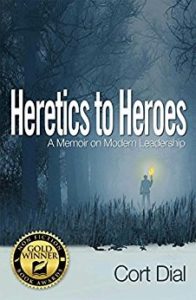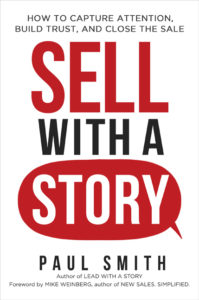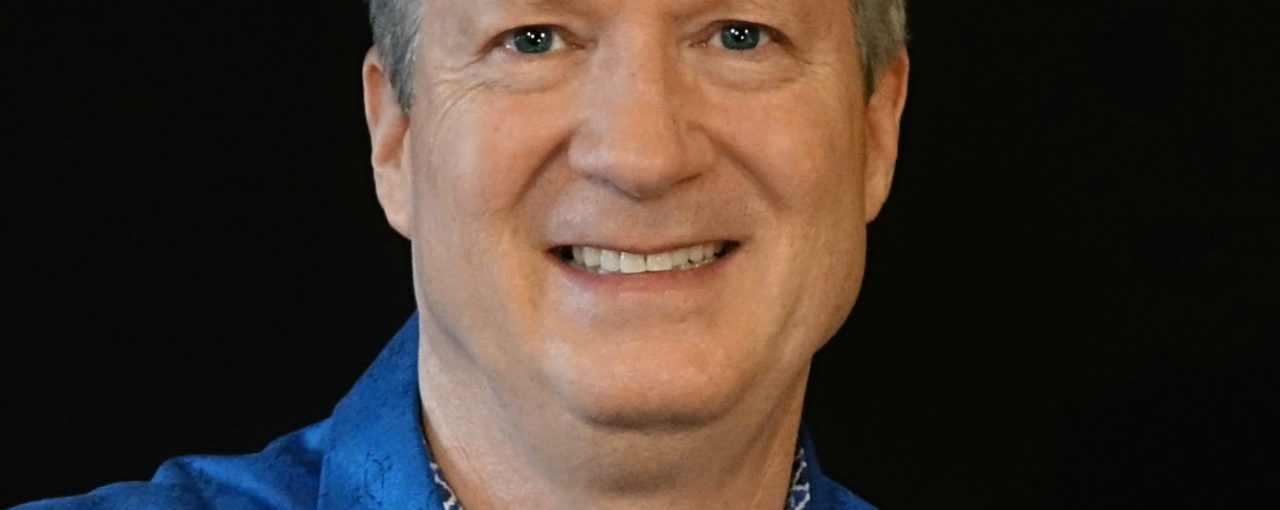Podcast: Play in new window | Download | Embed
Subscribe: RSS
Podcast (lead-with-a-story-podcast-series): Play in new window | Download | Embed
Subscribe: RSS
 I recently had the chance to visit with performance coach Cort Dial, author of the book Heretics to Heroes: A Memoir on Modern Leadership.
I recently had the chance to visit with performance coach Cort Dial, author of the book Heretics to Heroes: A Memoir on Modern Leadership.
He shared the story of a fascinating but tragic incident early in his career that led him to develop a very different leadership philosophy. It’s always more exciting to listen to my guests share these stories personally. So, I’d encourage you to click the play button above. But below is an excerpt of that story from his book and a few of the lessons he discusses on the podcast.
From Heretics to Heroes:
In the early eighties, I was in my first supervisory position at a small chemical plant on the East Coast. I was on the dock when I heard a crackle on my radio. It was the plant medic, Tim.
“Cort Dial, please come to the contractor fabrication area — immediately, over.” Tim was a real professional and if he wanted me there, he had a darn good reason. I immediately began walking to that section of the plant.
It was foggy that day. But as I got close, I narrowed my eyes, trying to get a glimpse of what might be happening, but the fog made it impossible. All of a sudden, I noticed a peculiar sound, one I’d never heard before. I thought, What the hell is that?
It sounded like a recording of a men’s choir but as if someone was turning the speed up and down, causing the pitch to fluctuate. The eerie noise only heightened my apprehension, and I began to breathe even deeper. My heart was now beating through my chest.
When I was a few hundred yards from the contractor area, I began to make out a large, dark object on the horizon, just barely visible through the fog. It was a huge, shadowy mound, and to the right of the mound was a smaller, square, gray object with something long and thin sticking out its top. And that sound. It kept getting louder, but for the life of me I could not make it out. By now, I was near panic, and despite the plant rule, I began to jog toward the contractor area.
When I was about a hundred yards away, the objects began to take shape through the fog. I realized the smaller of the two was a crane, but I still couldn’t make out the larger mound. At that instant, I realized that in the background of the entire scene was another object . . . an electrical tower. I said to myself, Oh, my God! Someone was operating a crane under the main electrical lines that power the plant!
I started to sprint. With each step, the objects became clearer and clearer, but I still could not make out that sound. It was creepy, and as much as the crane and power lines scared me, the sound was terrifying. Then, as I reached about fifty yards from the scene, everything became clear. The crane had made contact with the plant’s main power lines. The larger mound was made up of about fifty men, all huddled together, some standing and some on their knees. The eerie sound was men praying, crying, and wailing.
I stopped short from my sprint as I approached the group. The men stood and parted so I could walk into the center. As I walked past them, they all looked up at me, each with tears in his eyes, and continued to mumble prayers. Then I saw Tim.
Tim was at the center of the group, kneeling down next to an older man lying at on his back. The man’s arms and legs were sticking up in the air, and he was staring at the sky. It was as if he were reaching for the sky with his entire body.
Tim noticed me and motioned for me to come over, which I proceeded to do. It was at that moment I noticed that the man was missing most of his hands and feet. They had been blown off by the electricity that had rushed through his body. He had a massive open wound in his stomach, his organs visible. I later learned that when the crane struck the power line, he had been holding the load with both hands. The shock threw him several yards in the air, and he flew into a protruding piece of metal that sliced open his abdomen.
I looked at his hands. There was very little blood. What fingers he still had looked like peeled bananas, oozing and dripping clear liquid. The electricity had cauterized the wounds in his hands and feet. As I walked carefully around the man, I noticed that his deep blue eyes were still staring straight up at the sky. His handsome face was tight with fear as Tim stroked the man’s silver hair.
“But I don’t feel any pain,” the man gasped. “I don’t feel any pain.”
As I approached, Tim grabbed my forearm and yanked me down next to him and the man.
“Cort, this is Harry,” Tim whispered in my ear. “He’s going into shock, and he’s probably not going to make it. Stay with him, hold his hand, and comfort him. I’m going to meet the ambulance. I’ll be back as soon as I can.”
With that, Tim handed me Harry’s arm. I placed my hand in what remained of his. Harry continued to look into the sky as I cried and prayed with all the other men.
“I can’t feel any pain,” Harry repeated, his gaze straight up. Then he lost consciousness.
Less than an hour later, I was sitting in the main conference room of the document control building. Some of the staff members were blaming each other, some screaming in anger. A fist fight broke out, men pummeling one another and continuing to curse and yell. The plant manager walked in, rushed to the men, and broke up the fight. Once the commotion of the fighting died down, Bud walked to the front of the room.
“Shut up and get your ass in a chair,” Bud ordered. “I have a question to ask, and no one is leaving this room until I get a satisfactory answer.” Bud turned to the blackboard and wrote a question: How did we kill this man?
He then explained the process he would be using. One by one, starting on Bud’s right and moving counterclockwise around the table, each of us was to give an answer to his question. This process would continue until someone gave him the answer he could live with.
The process went on for a couple of hours, with several rounds around the table. Bud refused to let anyone get a drink or use the restroom, and he declined any requests to bring food into the room. Still, the answers remained the same:
 “Bud, he got himself killed. He’s an electrician and should’ve known not to get anywhere near a crane under power lines.”
“Bud, he got himself killed. He’s an electrician and should’ve known not to get anywhere near a crane under power lines.”
Each time it became my turn to answer, I requested to pass, which Bud allowed, at least for a while.
After about three hours, Bud said, “Cort, I want you to try and give me an answer this time. If you can, tell me what you are thinking and feeling.”
“I don’t know how we killed Harry. I feel as bad as anyone that this happened,” I responded, my volume rising as I spoke. “For Christ’s sake, I held what was left of his hand while he died. What more do you want from me?”
There was a long pause. Then Bud said in a quiet and calm voice, “Cort, all I want is to know how we did this. Don’t you think Harry’s family deserves an explanation? At least I can give them that much.”
Tim jumped in and gave the same answer that he had given each time prior. “Bud,” Tim said, “if Harry had only followed our crane procedures—”
Bud interrupted Tim by leaping out of his chair, grabbing the nearest three-inch binder—which happened to be the bright orange safety manual—and heaved it at Tim while screaming, “I don’t give a f–k about the goddamn procedure, Tim!”
Unfortunately for me, I was sitting sideways to Bud, directly behind Tim. Tim ducked, and the binder struck me point-blank in the side of the head.
Looking back, I have to conclude that the safety binder knocked some sense into me, because when Bud asked me this time, I did have an answer. But I was too ashamed to say it out loud. Bud must have sensed this, because he started to gently interrogate me.
“Cort, do you know whether a hazard risk analysis was conducted before we decided to stage the contractors directly under the main plant power lines?”
“Yes, sir.”
“Yes, you know, or yes, we did?”
“Yes, sir, I know we did.”
“Did you participate in that exercise?”
Again, I answered, “Yes, sir, I did.”
Bud continued. “And what was discussed during that exercise?”
“I don’t exactly recall,” I replied. Actually, I did, but I was too ashamed to say.
“Did you discuss the power lines?” “No, sir.”
“Did you discuss the cranes?” “No, sir.”
“If you didn’t discuss the power lines or cranes, what the hell did you discuss?”
Never in my life have I felt more shame than at that moment. It took a while for me to muster up the nerve to answer. I looked up at Bud through tearful eyes and said, “We talked about how contractors are dirty and that we didn’t want them using our bathrooms or locker rooms.” I started crying.
“What else did you talk about, Cort?” Bud asked.
“We talked about how we didn’t want contractors parking in our parking lot . . . That’s why we stuck them at the far end of the plant and put in that gravel lot,” I said.
“And did you talk about anything else?” Bud asked.
I breathed in sharply and regained some composure. “Yes, sir, we did. We talked about how contractors steal things, and so we needed to put a temporary guard shack at their gate and inspect them any time they exited.”
Bud paused for what seemed an eternity. He stared at me with a blank expression on his face. I wasn’t sure if what I had said stunned him or if he was just utterly disappointed in me. I kept my gaze on the table in front of Bud, too embarrassed to meet his eyes or look in the faces of the other men in the room.
Then Bud broke his silence and rose out of his chair. He leaned over the table, looked down at me, and said in a voice so soft it was almost a whisper, “Cort, how did we kill this man? How did we kill Harry?”
I responded, “We killed him, Bud, because he was a contractor.” Then I collapsed to the floor sobbing.
Tim knelt down next to me and patted me on my back. “It’s not your fault,” he said. “You didn’t kill Harry. Don’t put this all on yourself. We all played a role in this.”
I appreciated that Tim was attempting to make me feel better, but deep down I knew that if I had done my job, Harry would probably be alive. I had to face that we’d killed him because he, being a contractor, didn’t matter to us. Harry had not been worthy of our concern simply because of the station he held in life. I knelt on the floor, weeping and thinking to myself, How did I come to be such a person? Is that really who I am? Am I that heartless?
As I collected myself, Tim helped me back to my chair. I sat there, continuing to cry. Bud waited until I was completely composed.
“My friends, I have my answer,” Bud said. “This meeting is adjourned. We will reconvene tomorrow morning at 6:00 a.m. in this room. Please say a prayer for Harry and his loved ones tonight. . . Cort, please stay behind. I want to discuss something with you.”
I returned to my seat, and the room emptied except for Bud and me.
“I want to thank you for having the courage to fess up to what we caused here today,” Bud said. “We killed a man, and you were the only member of my staff willing to say why. I knew you’d be the one.”
“You’re welcome, sir. But I don’t deserve to be praised for what I did. I should be in jail for not doing whatever is necessary to protect anyone who sets foot on this site. That’s our primary responsibility, and I failed at it miserably. And what disappoints me the most is that I failed not because I made an honest mistake; I failed because I’m an ignorant bigot.”
“We all failed. This is not yours to shoulder alone,” Bud replied. “We all will have to come to terms with what happened today.”
Lessons Learned
Cort walked away from that tragedy with two key lessons:
- First – group think is real and powerful. We are so influenced by those we consider peers and leaders that we can begin to think, say, and do things we normally wouldn’t––even when those choices contradict what we truly believe and value.
- Second – how we relate to and treat our people has as much to do with their performance as any system or process that can be imposed on them. In other words, who one is being is as important as what one is doing. Instead of asking yourself, “What do I need to do in this situation”, ask yourself, “Who do I need to be in this situation to be my most effective?” That could be a guide, a teacher, or a listener. Not just a boss.
When the contractor died, Cort’s plant was deemed one of the safest, buoyed by the best systems and processes in the company. But because they didn’t see the contractors as worthy of their concern, they didn’t apply those highly touted systems to the contractors the way they applied them to their own employees. The fatality was not a result of a failed system or process. As Cort says, “A man died because we failed to be who we genuinely are, and we didn’t act in a way that reflected our integrity.”
What he did about it
- Cort developed a complete overhaul to the approach the company took to working with contractors, centered on the principle that “the only difference between a contractor and one of us is that our paychecks have different company names on them.”
- Under the guidance of his plant manager, Cort developed a personal stand that has guided him to this day. It’s a carefully written commitment “to the health, safety, and well-being of the men and women who design, build, operate, and maintain our world.”
- Cort placed a recurring 7:00 a.m. notification in his Google calendar to remind him at the dawn of each new day who he truly is and to what he is really committed, using that stand.
That stand and its daily reminder is one of dozens of game-changing leadership principles Cort outlines in his book.
You can learn more about Cort, his performance coaching, and book at cortdial.com/leadwithastory/.
Use these links to subscribe to this podcast on iTunes or Stitcher, or Podbean.
—
 Paul Smith is one of the world’s leading experts on business storytelling. He’s a keynote speaker, storytelling coach, and bestselling author of the books Lead with a Story, Parenting with a Story, and Sell with a Story.
Paul Smith is one of the world’s leading experts on business storytelling. He’s a keynote speaker, storytelling coach, and bestselling author of the books Lead with a Story, Parenting with a Story, and Sell with a Story.


 Connect with him via email here.
Connect with him via email here.
Follow him on Facebook, LinkedIn, Twitter, and Instagram.
Sign up for his newsletter here to get one new story a week delivered to your inbox.


Thank you for the incredibly valuable lesson of seeing each person as someone with worth and value: seeing each person as ourselves. Wow, very powerful story, thank you Cort for being able to be honest in that moment. I can only imagine how hard that was given the trauma and pain you just experienced in the loss of another human being right in front of you.
As a Cause-Focused Storyteller currently serving as a Story Consultant at the World Bank, my message Every day is: value the people you serve, value the people you work with. Imagine if we all did this what a better, safer, kinder world we would live in. PS. It’s possible, I’ve seen shift at the World Bank into deeply valuing those served rather than seeing data on a spread sheet!